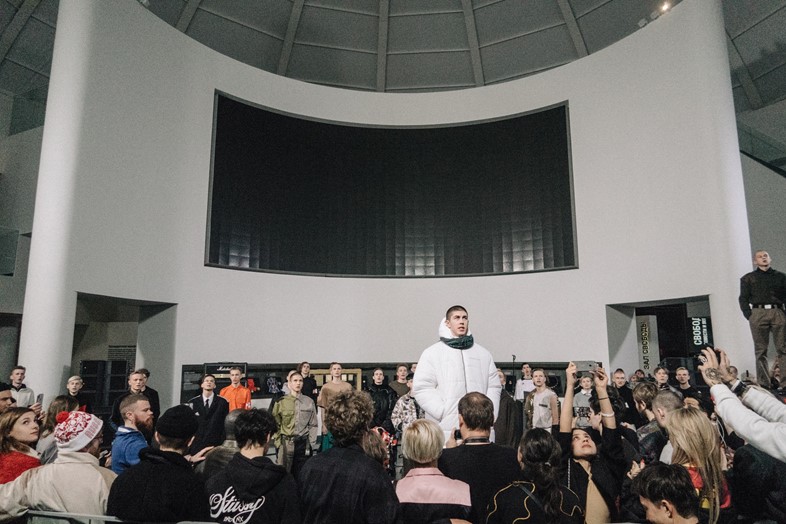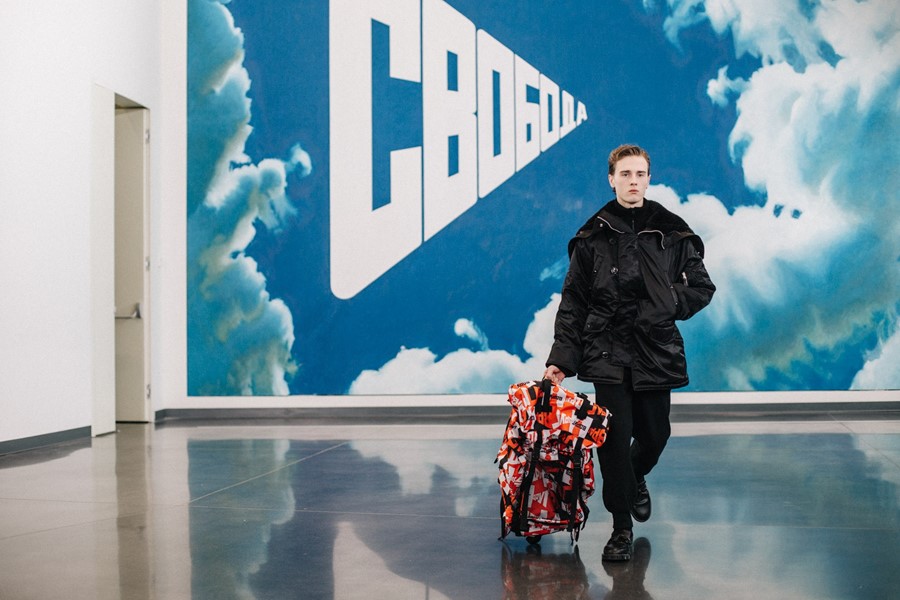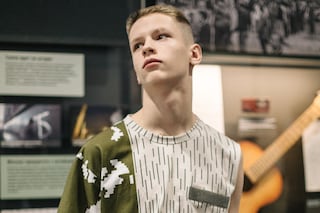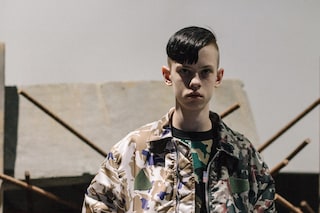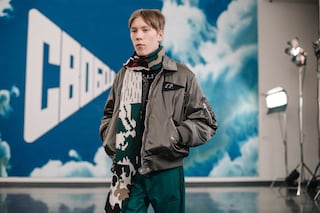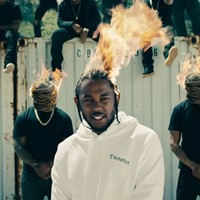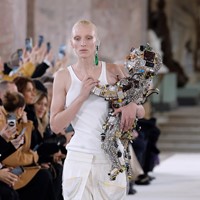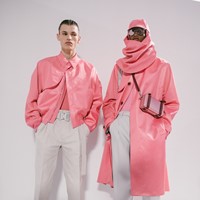From the clothes and the casting to his collaboration with a legendary Russian artist
Last night in Yekaterinburg, a (very cold) city in the heart of Russia, Gosha Rubchinskiy presented his AW18 show, marking the final spot on a three-city tour of Russia that began back for AW17. The show took place in a museum dedicated to the country’s first democratically elected president, Boris Yeltsin, and saw models storm out in front of an artwork by Erik Bulatov that declared “freedom” in Cyrillic, before moving through the museum’s rooms and, finally, breaking into song. They wore looks which revisited some of Rubchinskiy’s archive, referenced several of Bulatov's artworks, and mixed in military motifs including camouflage and flags – an attempt, the designer said, to create a new uniform for youth. The morning after, we caught up with Rubchinskiy to get his take on it.
ON THE SHOW’S LOCATION
“The shows have been a trilogy, and this is the last part. In Kaliningrad and Saint Petersburg we chose very old school locations, so this time we wanted something unexpected and different. It’s a great location because all the different sections of the museum are dedicated to different parts of the 90s which is an important time for me, and an important time for Russia. It’s a good place to end the story.”

ON CREATING A NEW UNIFORM
“We live in a strange time, where you can read one thing in the news and see other things on Instagram. When I watch the news, it looks like people want to separate one another, countries, people, to try to make us feel bad about each other. But if you can go on Instagram, and see what’s going on in the young generation’s heads, today we have more things which can unite people than separate them. That’s why we made this message of a new uniform. I tried to build a uniform for young people around the world. It can be China or Russia, Japan, Korea, England – they wear the same brands, listen to the same music. This is the reality.”
“If you see what’s going on in the young generation’s heads, today we have more things which can unite people than separate them” – Gosha Rubchinskiy
ON COLLABORATING WITH ARTIST ERIK BULATOV
“I had seen Erik’s work in museums and books, and last year I went to my friend’s place in France, the Foundry. It’s an art foundation, and they gave a space to Erik to create new works so he spent a few months there and I met him when I visited. He’s quite old but he’s not a conservative artist who lives in the past. He lives in the future, in the moment. When I saw his 'a friend suddenly turns to foe' work for the first time, for me it was all about the moment we are in, the politics. Things change so fast these days, sometimes you don’t have time to work out what’s going on – a friend is suddenly an enemy, an enemy is suddenly a friend. After they showed me it, I asked if we could use it for the collection.”
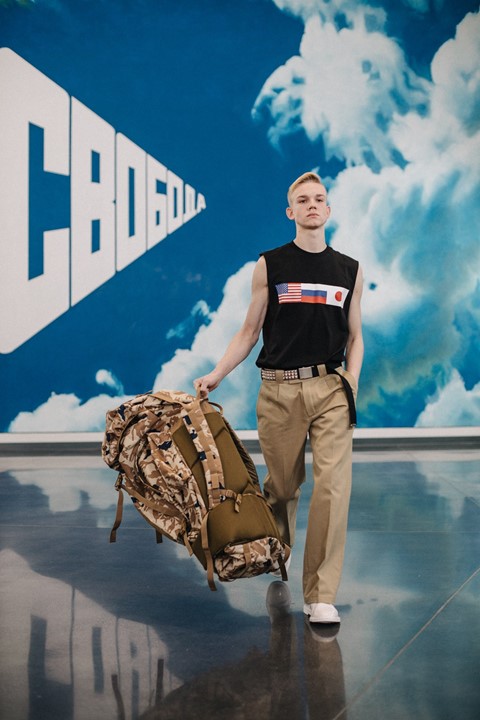
ON THE CASTING
“In the collection, we tried to do a greatest hits. So we used a few boys who already were in Kaliningrad, a few who were in Saint Petersburg, a few Yekaterinburg local boys, a few new boys, and this time, one girl. We mixed new faces with the models who are like our family. It’s been interesting to discover other cities, to see what’s going on, and the local boys who walked in the show are not that different to the boys I met in Saint Petersburg or Moscow. The cities all have a different energy though; it’s hard to say what it is, but you can feel it.”
ON WHY THE MODELS STARTED SINGING
“The idea came to me the night before the show, I thought we needed something. The song came from the 80s when we had a new wave of punk rock and rock music in the late Soviet time, it’s by the band Nautilus who came from Yekaterinburg. The song has had many lives, not just in the 80s. It’s used in Aleksei Balabanov’s famous movie Brat, which means brother – it was an iconic movie for my generation about the 90s. Like Trainspotting was for England, Brother was the same for Russian people, the same generation. The museum is about how Western culture came to Russia and how we tried to adopt it. In Russia, we’re trying to find our own way in the world now, to see what we want for the future.”
